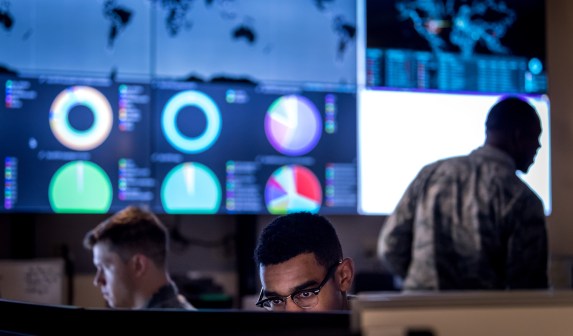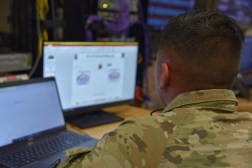Air Force’s Kessel Run has admirers elsewhere in the military

After the Air Force scored early successes with its agile software development and acquisition program Kessel Run, other parts of the Department of Defense are looking to adopt and scale those early wins.
Kessel Run, taking after its “Star Wars” namesake, wants to kick Air Force software development and acquisitions into hyperdrive, reducing the yearslong timeline down to a few months with agile principles and saving millions of dollars along the way. The service began piloting the program in 2017 — bringing together airmen, Air Force civilians and contractors — and launched an Experimentation Lab in Boston this May.
Word has gotten out, and the rest of the DOD wants a piece of Kessel Run’s success, Air Force IT leaders said Friday at an AFCEA luncheon.
“DOD is stepping up to the table now to guide the services on how to [scale and adopt it],” said Air Force CISO Wanda Jones-Heath.
“They’ve already taken a lot of the Kessel Run artifacts, the approach, the playbook, and they’re starting to use that,” she said of the DOD. “There are other services also doing the same thing. So now they’re looking at the best of breed. How can we scale across the entire DOD enterprise to bring that capability securely into what we do?”
Brig. Gen. Kevin Kennedy, director of cyberspace strategy and policy in the service’s Office of Information Dominance and CIO, spoke about the importance of the Kessel Run program and how its reliance on the DevOps model is making the Air Force more software-based — “things are more software-defined, more agile and I can change capabilities,” he said.
“If I have an aircraft out there, it can be a sensor, it can be shooter, it can be a [command and control] node, it can be a node on the network,” Kennedy said at the event.
So now, when building out anything software-based, Kennedy said he needs three basic types of people in the room: “I need an operator, whether that’s a space operator, cyber operator, an air operator — I need an operator in that conversation who understands how to do software development, understands that it has some level of efficiency. I need an acquirer, someone from the acquisition community who understands how do we field these types of capabilities but also has some proficiency in it. And then I need a coder. That’s the ninja person who really knows how to do it quickly and can leverage those talents.”
Helping this process along, he said, is a developing program in the Air Force that classifies airmen with coding experience, much like the service does for someone who speaks a foreign language, so they’re easier to find.
“It’s not as static as foreign languages,” Kennedy said, because the popular coding language of the moment changes pretty rapidly over time. But the service is looking to expand it and tailor to evolving programming languages.
Ultimately, military services are culture-driven organizations, and therefore, scaling something like Kessel Run across the branches will take an understanding of their distinct cultures and behaviors because each service comprehends an ask differently based on culture.
“It’s a lot about cultural movement in the services,” he said. “You ask folks to do stuff in some services, and it’s not an ask, [to them] it’s a task or a ‘go do.’ In some services, it’s an ask. In some services, it’s a recommendation. There’s different cultures in a group that change behavior,” he said, and you must learn to modify it for each culture “to get the same effect.”






